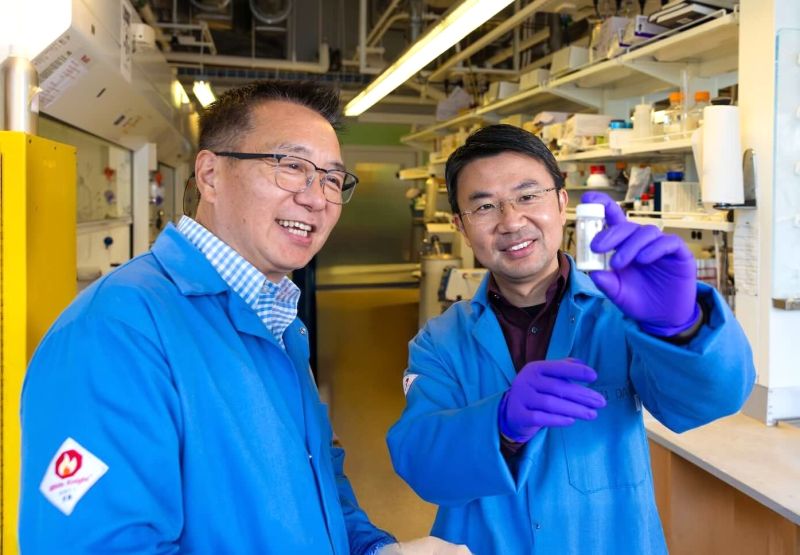
Lab-synthesized botanical compound shows promise for fighting aggressive breast cancer
Chemists funded by the U.S. National Science Foundation have developed a new process to synthesize a plant-based compound that shows effectiveness against triple-negative breast cancer cells. According to the American Cancer Society, triple-negative breast cancer is one of the most aggressive types of breast cancer and accounts for 10-15% of all breast cancer cases. The process also increases the compound's potency against these cancer cells and provides a method for it to be mass-produced to enable further testing as a potential treatment.
The new process can also be used broadly to help discover new medicines by synthesizing and testing other complex organic compounds. The findings were achieved by Emory University researchers and published in The Journal of the American Chemical Society.
The compound — called phaeocaulisin A — is extracted from the flowering plant Curcuma phaeocaulis, a relative of ginger and turmeric used for centuries in traditional medicine.
"We not only efficiently replicated a complex natural product, we also improved upon it by turning it into a more potent compound," says Mingji Dai, professor of chemistry and co-lead of the study.
"It is only the first step in a long process," says Yong Wan, professor of pharmacology and chemical biology and study co-lead. "But the new analogue of phaeocaulisin A we have reported shows promising efficacy against triple-negative breast cancer cells, which are very aggressive and challenging to deal with."
The study describes how the unique molecular structure of phaeocaulisin A works against triple-negative breast cancer by inhibiting it as a particularly effective anti-inflammatory agent. Wan and Dai were drawn to understand this property and improve upon it with their lab-synthesized analogue version.

Credit: Sarah Woods, Emory University
Other chemists have synthesized phaeocausilin A before by using a 17-step method. But Wan and Dai wanted to find a more efficient way. In the process, they devised a new type of chemical reaction to create complex molecules: palladium-catalyzed carbonylation, which uses low-cost and widely available carbon monoxide as a resource. This discovery also cuts down their total synthesis of phaeocausilin A from 17 to 10 steps.
"The icing on the cake," says Dai, "is that the chemical reaction we invented holds potential for widespread use in organic chemistry to make many other compounds for drug discovery."
"What is so exciting to me about this work is that this methodology can be broadly applied to other synthetic targets. These reactions enable chemists to rethink strategies for how to piece together molecules, like building a Lego set with a different, shorter, set of instructions," says John Jewett, program director in the NSF Division of Chemistry, which supported the research.
The chemists say the compound and this method will require years of further research to evaluate its full potential. That said, it's already shown possibilities for production at scale, and in preparation for commercial therapeutic use.
"My lab's focus is to find ways to integrate basic research into translational research," Wan says. "We are not only trying to understand the mystery of mechanisms behind cancer. We also want to bring strategies to neutralize cancer to the clinical bedside."
Distribution channels: Science
Legal Disclaimer:
EIN Presswire provides this news content "as is" without warranty of any kind. We do not accept any responsibility or liability for the accuracy, content, images, videos, licenses, completeness, legality, or reliability of the information contained in this article. If you have any complaints or copyright issues related to this article, kindly contact the author above.
Submit your press release